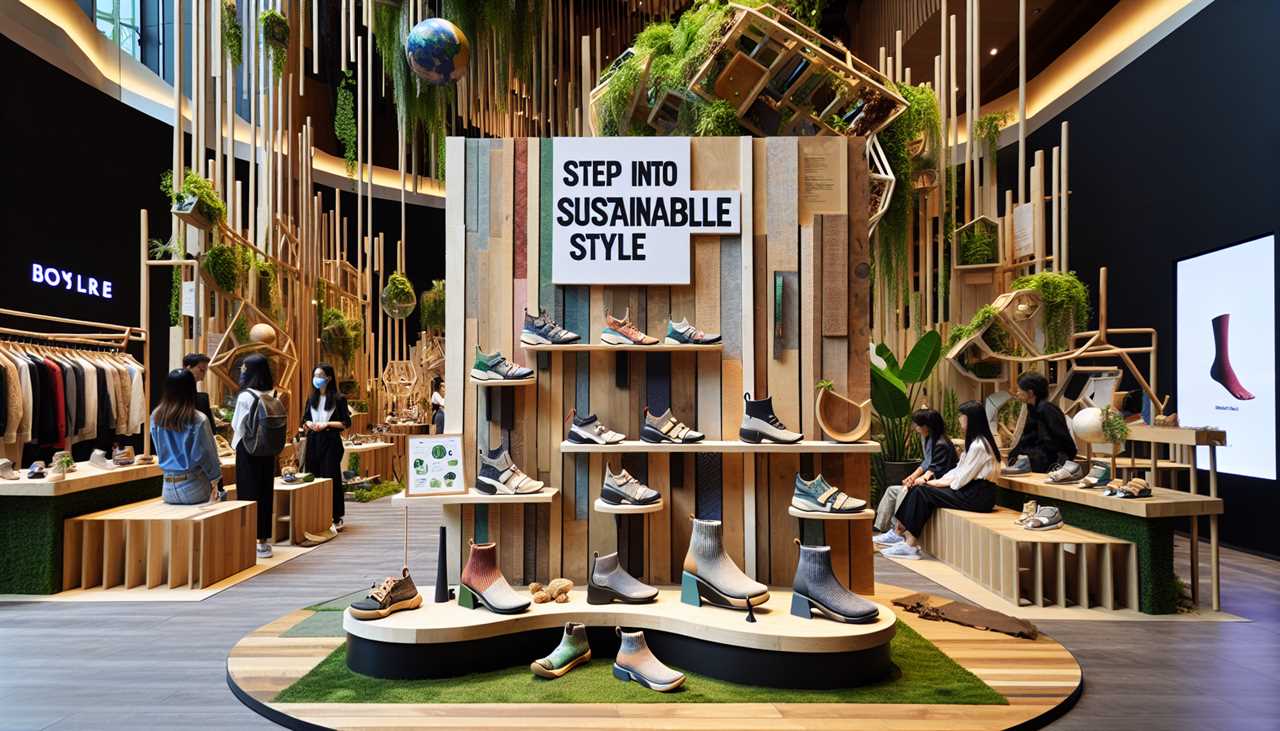Fashion
Step into Sustainable Style: Biodegradable Footwear for Eco-Conscious Fashionistas
The fashion industry is trending towards sustainability, with a noticeable shift in consumer demand for eco-friendly products, particularly in footwear.

The Rise of Sustainable Fashion
In recent years, we have witnessed a significant shift in the fashion industry towards more sustainable practices. As consumers become increasingly aware of the environmental impact of their purchasing decisions, the demand for eco-friendly products has surged. One area where this trend is particularly evident is in the footwear sector, with biodegradable footwear emerging as a popular choice among eco-conscious fashionistas.
Understanding Biodegradable Footwear
Biodegradable footwear represents a revolutionary approach to shoe design and manufacturing. These shoes are crafted using materials that can naturally decompose over time, significantly reducing their environmental footprint. The concept of biodegradable footwear aligns perfectly with the principles of circular economy, where products are designed to be reused, recycled, or returned to nature at the end of their lifecycle.
Materials Used in Biodegradable Footwear
The creation of biodegradable footwear involves the use of innovative, eco-friendly materials. Some of the most common materials include:
1. Organic Cotton: Grown without harmful pesticides or chemical fertilizers, organic cotton is a popular choice for the upper part of biodegradable shoes.
2. Natural Rubber: Extracted from rubber trees, this material is often used for soles due to its durability and biodegradability.
3. Cork: A renewable resource that is both lightweight and water-resistant, making it ideal for insoles and other shoe components.
4. Pineapple Leather: Also known as Piñatex, this vegan alternative to leather is made from pineapple leaf fibers.
5. Algae Foam: An innovative material used in shoe soles, derived from algae biomass.
The Benefits of Choosing Biodegradable Footwear
Opting for biodegradable footwear offers numerous advantages, both for the environment and the consumer:
1. Reduced Environmental Impact: As these shoes decompose naturally, they don’t contribute to the growing problem of waste in landfills.
2. Ethical Production: Many brands producing biodegradable footwear prioritize fair labor practices and ethical manufacturing processes.
3. Unique Aesthetics: Biodegradable shoes often boast unique designs and textures, appealing to fashion-forward consumers.
4. Comfort: Many eco-friendly materials used in biodegradable footwear are known for their comfort and breathability.
5. Versatility: From casual sneakers to formal shoes, biodegradable options are available in various styles to suit different occasions.
Leading Brands in Biodegradable Footwear
Several innovative brands have taken the lead in producing high-quality biodegradable footwear:
1. Allbirds: Known for their wool sneakers, Allbirds has expanded into other sustainable materials, including eucalyptus tree fiber and sugarcane-based soles.
2. Native Shoes: This brand offers fully biodegradable shoes made from plant-based materials that can be composted at the end of their life.
3. Vivobarefoot: Specializing in minimalist footwear, Vivobarefoot has introduced a line of biodegradable shoes made from algae and other natural materials.
4. Timberland: The renowned footwear brand has committed to using recycled, organic, or renewable materials in all its products by 2030.
The Future of Biodegradable Footwear
As technology advances and consumer demand for sustainable products continues to grow, we can expect to see further innovations in the field of biodegradable footwear. Some potential developments include:
1. Improved Durability: Ongoing research aims to enhance the longevity of biodegradable materials without compromising their eco-friendly properties.
2. Expanded Material Options: Scientists and designers are exploring new sustainable materials, such as mushroom leather and seaweed-based fabrics.
3. Customization: 3D printing technology may enable the production of custom-fit biodegradable shoes, reducing waste and improving comfort.
4. Closed-Loop Systems: More brands may adopt take-back programs, where customers can return their worn-out shoes for recycling or composting.
Challenges and Considerations
While biodegradable footwear represents a significant step towards sustainable fashion, there are still challenges to address:
1. Cost: Eco-friendly materials and ethical production processes can result in higher prices, potentially limiting accessibility for some consumers.
2. Performance: Some biodegradable materials may not yet match the durability and performance of traditional shoe materials in certain applications.
3. Consumer Education: There’s a need for increased awareness about the benefits of biodegradable footwear and proper disposal methods.
4. Infrastructure: The development of appropriate composting facilities and recycling systems is crucial for the effective end-of-life management of biodegradable shoes.
Conclusion
Biodegradable footwear represents a significant advancement in sustainable fashion, offering eco-conscious consumers a stylish and environmentally friendly alternative to traditional shoes. As the industry continues to innovate and address existing challenges, we can look forward to a future where sustainable footwear becomes the norm rather than the exception. By choosing biodegradable shoes, we not only step into sustainable style but also contribute to a more circular and environmentally responsible fashion industry.

Hey there! I’m William Cooper, your go-to guy for all things travel at iMagazineDaily. I’m 39, living the dream in Oshkosh, WI, and I can’t get enough of exploring every corner of this amazing world. I’ve got this awesome gig where I blog about my travel escapades, and let me tell you, it’s never a dull moment! When I’m not busy typing away or editing some cool content, I’m out there in the city, living it up and tasting every crazy delicious thing I can find. Join me on this wild ride of adventures and stories, right here at iMagazineDaily. Trust me, it’s going to be a blast! 🌍✈️🍴







